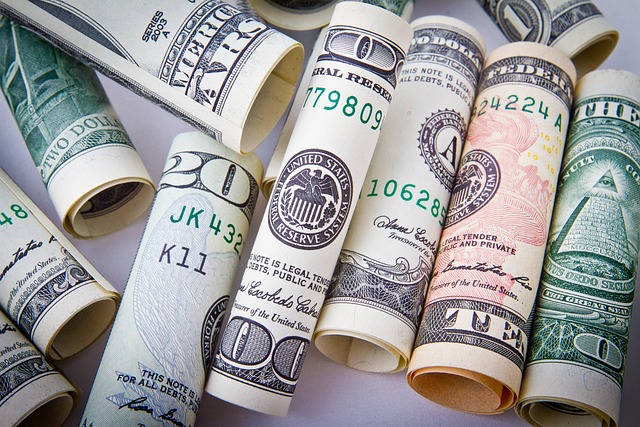Affiliate marketing has turned into a really popular way to earn money online, especially for bloggers, influencers, and website owners. The idea is pretty simple: you promote products or services from other companies, and when someone buys using your unique link, you get a commission. It’s a practical way to turn content creation into consistent income, and a lot of big websites and everyday creators are cashing in on it.
How Affiliate Marketing Works: Networks vs. Programs
When you’re starting out in affiliate marketing, you’ll notice there are affiliate networks and affiliate programs. These might sound similar but work in slightly different ways.
Affiliate programs are run directly by a company. So, if you join the Shopify affiliate program, you’re working with Shopify itself. You promote their products, and they pay you directly. These programs are usually more focused on one brand, with set commission rates and terms managed by that company.
Affiliate networks act kind of like a middleman. They connect you to lots of different brands at once. Instead of signing up for each company’s program separately, you join a network and get access to hundreds (sometimes thousands) of offers. For example, CJ (Commission Junction) and Rakuten let you pick from tons of merchants across every niche. Networks handle the tracking, payouts, and technical stuff, which can make things simpler as you scale up.
– Turn your own Hobby/Niche website into revenue.
– Monetize content based on your interests and goals.
– Also monetize Social Media and YouTube.
– Step by step training, tools and support. Everything you need for success.
– Your own AI powered website.
– Try it FREE to see if the program is right for you. No credit card needed.
Top Paying Affiliate Programs Worth Checking Out
There are thousands of affiliate programs and networks out there, but some are way better for earning higher commissions and regular payouts. Here are 10 options that are known for paying well, are reliable, and are widely respected. If you’re just getting into affiliate marketing, these programs provide good starting points and can help you learn the ropes while making real money.
1. VigLink (Now Sovrn Commerce)
VigLink/Sovrn Commerce is a go-to for bloggers who want to monetize outbound links with hardly any effort. You add a piece of code to your site, and it automatically turns regular product mentions into affiliate links. The platform partners with over 70,000 merchants. VigLink’s commissions depend on the merchant but can be higher than many standard affiliate rates, and it pays monthly via PayPal. If you don’t want to manually add links or prefer to monetize older content, this one’s really handy. The automation here helps you capture commissions from blog posts that might have otherwise just sent free traffic away with no reward.
2. CJ (Commission Junction)
CJ is one of the biggest affiliate networks around. Once you sign up, you get access to trusted brands like Lowe’s, GoPro, Expedia, and over 3,000 others. Commissions and cookie durations vary, but some offers pay 10% or more per sale. CJ is known for thorough tracking tools and reliable monthly payments. If you’re looking to cover a bunch of different topics or switch things up as your site grows, CJ makes it really easy to find your way through their wide library of merchants.
3. Teachable
Teachable is a great pick for education and online course niches. If you promote Teachable and someone signs up for a paid plan, you can snag up to 30% recurring commission for every payment the customer makes. They also run regular promotions to help you give your conversions a boost. The payout is pretty reliable and happens monthly via PayPal. It’s especially great if you have an audience interested in online learning or starting their own business, since Teachable’s platform is really userfriendly for beginners.
4. Bluehost
Bluehost has one of the more famous affiliate programs, especially among bloggers. You’ll find loads of hosting review sites recommending Bluehost because the payout is so good. You get up to $65 or more per qualified signup. They’ve also got strong customer support, banners, and prewritten material to help you promote. Payouts are made about 45 days after the end of the month, which is pretty standard with most hosting companies.

5. Rakuten Advertising
Rakuten connects you to a ton of well-known brands like Walmart, Best Buy, and Udemy. The dashboard is straightforward, and you’ll see a mix of commission structures, usually between 5% to 15%. Payments go out monthly (as long as you hit a $50 threshold) and come via check, PayPal, or direct deposit. Rakuten is especially popular for tech, fashion, and lifestyle bloggers who need options across lots of brands, so you can bring together different products in one place for your readers.
6. Kit
Kit is great if you like making “gear lists” for your blog or social media. Kit lets you curate product collections (for example: camera gear or home office essentials) and autogenerates affiliate links through Amazon, eBay, and others. You can earn commissions every time someone buys from your kit. It’s simple to set up, and payment depends on the partner programs you attach (often Amazon’s rates). It’s particularly eye-catching on social feeds where people want quick, visual inspiration for what to buy.
7. Amazon Associates
Amazon Associates is practically a household name. You can earn between 1% to 10% (depending on category) on any product Amazon sells. The beauty of Amazon’s program is the massive range and trusted brand. If someone clicks your link and buys anything, even if it’s not what you promoted, you still get a commission. Amazon pays monthly via direct deposit, check, or gift card, and signup is quick. It’s a low-barrier way to start but can be a real earner with volume, especially if you build content around trending products.
8. Awin
Awin is another massive affiliate network with over 21,000 advertisers, including Etsy, AliExpress, and HP. Commissions vary by merchant but can be competitive, sometimes hitting 15% or more. Awin is super beginnerfriendly: their dashboard is easy to use, and approval is fast. They pay out twice monthly with a $20 minimum and offer a bunch of payment methods. This flexibility makes it a solid choice whether you’re testing out different merchants or planning long-term content strategies.
9. Shopify
Shopify‘s affiliate program is known for solid payouts, especially for those in the ecommerce or make-money-online space. You earn an average of $58 for each user who signs up for a paid plan and as much as $2,000 for each Plus referral. They also provide lots of helpful promotional material, including guides and webinars. Payments happen twice a month and go via PayPal or direct deposit, cutting down on wait times for your earnings.
10. Impact
Impact gives you access to leading brands like Airbnb, Adidas, and Uber. You can find programs with CPA (cost-per-action), revenue share models, and more. Impact is big on tracking and dashboard features, letting you drill down into where your money’s coming from. Commissions and payment terms depend on each brand but can be really competitive, especially in tech and travel. Their modern dashboard helps you spot trends and optimize your promotions, which is perfect for affiliates wanting to get analytical about their earnings.
Things to Watch For Before Choosing an Affiliate Program
Going after the highest paying program straight away isn’t always the smartest move. Every affiliate partner is a bit different, so I like to keep these straightforward questions in mind:
- Do they provide good customer support? It’s handy to have helpful reps if you run into tech issues or have questions about payouts or tracking. Good customer support can smooth the way if you have trouble setting up links or need to get paid quickly.
- What are their commission rates and how often do they pay? Some programs look great upfront but have long payout cycles or tricky requirements. Read the terms and check for any minimum payment thresholds that might hold up your earnings.
- Does their payment method match with yours? Check if they pay through PayPal, bank transfer, or something you actually use. Some networks don’t offer every option worldwide, so make sure your country is supported to get paid without a hitch.
- Is this particular program relevant to your niche? It’s way easier and more authentic to sell products or services that actually fit your audience. If you run a fitness blog, partnering with gear, supplement, or workout programs makes way more sense than unrelated offers.
Those simple checks can save you a headache and help you lock in regular, reliable income.
Frequently Asked Questions
I get a lot of questions about affiliate marketing, especially about getting started, getting paid, and what programs fit certain niches. Here are a few that pop up all the time:
Question: How much can I actually earn with affiliate marketing?
Answer: The honest answer is, it depends on your audience size, niche, and how you promote. Some affiliates just make extra coffee money each month; others bring in thousands. Programs with recurring commissions, like Teachable or Shopify, are cool for building steadier income streams. If you pick programs that suit your content and build trust with your readers, your earnings can grow fast.
Question: Can I use more than one affiliate program at once?
Answer: Absolutely! Many affiliates spread their bets across different programs to see which performs best. For example, you could use Amazon Associates for physical products and CJ for software deals. Pairing several programs helps you keep up with changing trends and not put all your eggs in one basket.
Question: What are cookies and why do they matter?
Answer: Cookies are how affiliate programs track if a shopper came from your link. The longer the cookie duration, the more time someone has to buy (and for you to get credited). Programs like Amazon have pretty short cookies (24 hours), while others offer up to 90 days or more. This means the type of product you’re promoting influences which program is best based on how likely your reader is to make a quick purchase.
Question: Is affiliate marketing allowed with social media?
Answer: Yes, most programs allow social media promotion, though you’ll want to check their specific terms. Amazon Associates, for example, has strict rules about where you can post affiliate links, so always double-check. Using a mix of blog, YouTube, and social links usually helps you reach more eyeballs and make more sales.
The Value of Affiliate Programs
Affiliate programs make it possible for just about anyone to earn money online without building their own products or handling customer service. If you build trust with your audience, match the right products to your niche, and pick solid partners, affiliate marketing can become a really sustainable income stream. With the tech and payout options available today, it’s one of the most flexible side hustles around. Whether you’re new to online business or looking to add another revenue source, affiliate marketing gives you multiple ways to see results.
Whether you’re blogging about your favorite gear, making “best of” product lists, or just want to add an extra income source to your website, these top paying affiliate programs offer plenty of ways to get started and see genuine returns. With a bit of testing, you can find what works best for your brand and start seeing those commissions add up. The online landscape is always changing, but affiliate marketing remains a go-to option for creators wanting flexibility, low barriers, and the chance to scale up fast.
Here’s a little transparency: Our website contains affiliate links. If you click and make a purchase, we may receive a small commission. Don’t worry, there’s no extra cost to you.



